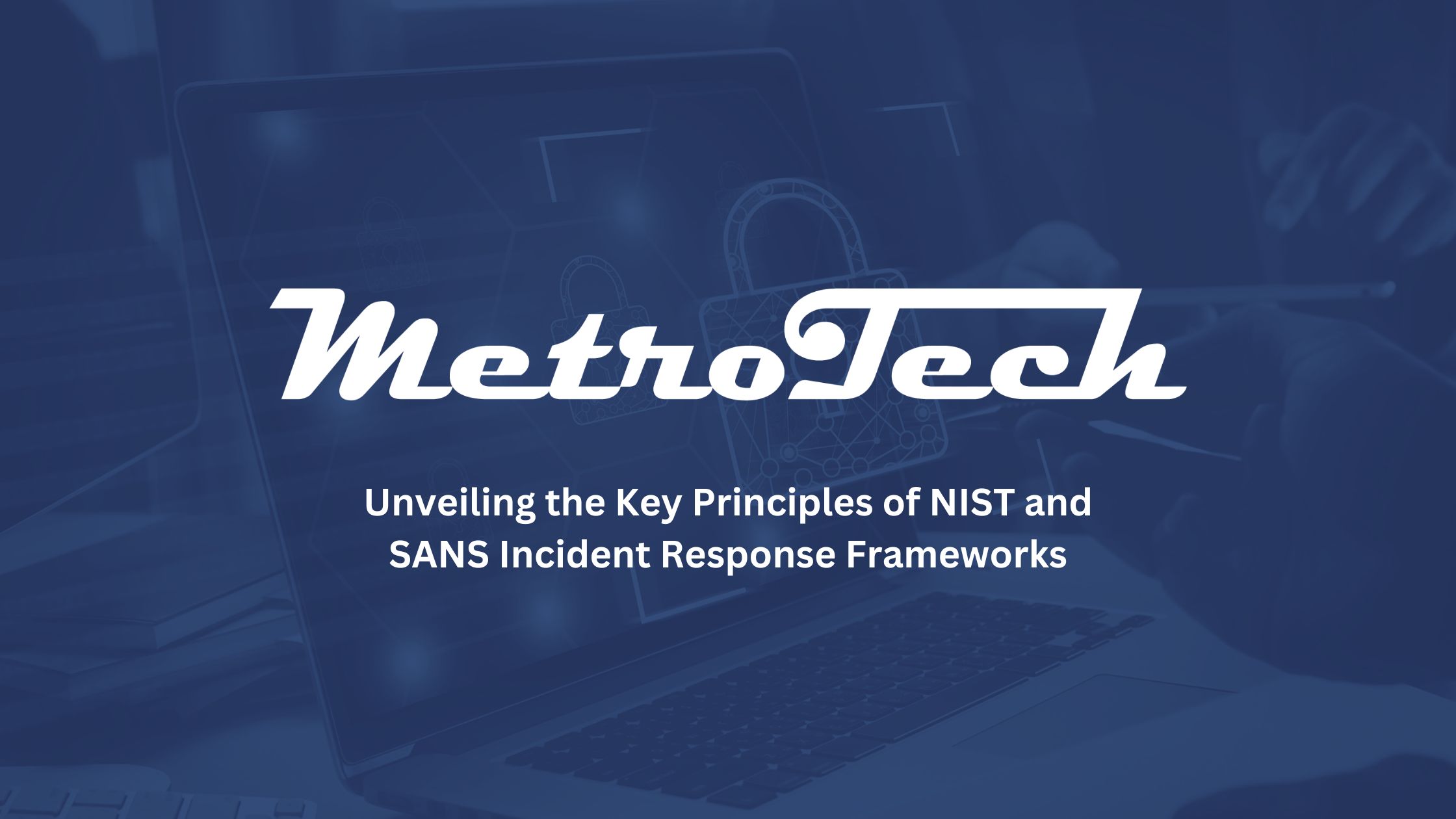
Introduction to Incident Response Frameworks
In the constantly evolving world of cybersecurity, organizations must be prepared to handle security incidents swiftly and effectively. For this reason, incident response frameworks are structured approaches that facilitate this process, and two of the most widely recognized frameworks are the National Institute of Standards and Technology (NIST) and the SANS Institute. With this in mind, we will delve into the details of these two frameworks and discuss their importance in the modern cybersecurity landscape.
NIST Incident Response Framework
The NIST incident response framework is outlined in the NIST Special Publication 800-61 Revision 2, which is a comprehensive guide to computer security incident handling. By the same token, this framework provides a systematic process for organizations to manage and mitigate the impact of security incidents.
Key Phases of NIST Framework
The NIST framework comprises four primary phases, each of which serves a distinct purpose in the incident response process:
Preparation
This phase involves the establishment of an incident response capability, including creating an incident response policy, plan, team, and training program. It also covers the acquisition of tools and resources necessary for responding to incidents.
- Incident response capability establishment
- Creation of policy, plan, and team
- Acquisition of tools and resources
Detection and Analysis
This phase focuses on identifying and analyzing potential security incidents. Additionally, organizations need to monitor their networks and systems continuously, as well as establish a proper incident reporting mechanism.
- Continuous network and system monitoring
- Incident reporting mechanism establishment
- Analysis of potential security incidents
Containment, Eradication, and Recovery
During this phase, organizations work to contain the impact of the security incident, eradicate the threat, and recover their systems and data. This process may involve a variety of tasks, such as isolating affected systems, removing malware, and restoring affected data.
- Containment of security incident impact
- Eradication of threat
- Recovery of systems and data
Post-Incident Activity
This final phase focuses on learning from the incident to improve the organization’s incident response capability. Equally important, this may involve reviewing the incident, identifying areas for improvement, and updating the incident response plan accordingly.
- Learning from the incident
- Identifying areas for improvement
- Updating the incident response plan

SANS Incident Response Framework
The SANS Institute, a leading provider of cybersecurity training and certification, has also developed its own incident response frameworks. This framework, known as the SANS Incident Handling Process, is based on the six-step model described in the SANS course “Security 504: Hacker Techniques, Exploits & Incident Handling.“
Key Steps of SANS Framework
The SANS Incident Handling Process consists of the following six steps:
1. Preparation
Similar to the NIST framework, the SANS model emphasizes the importance of establishing an incident response capability, including creating policies, plans, teams, and training programs.
- Incident response capability establishment
- Creation of policy, plan, and team
- Development of training programs
2. Identification
This step focuses on detecting security incidents and determining their scope and severity. Effective monitoring and reporting mechanisms play a crucial role in this process.
- Detection of security incidents
- Determination of scope and severity
- Effective monitoring and reporting mechanisms
3. Containment
During the containment phase, organizations implement measures to prevent the security incident from causing further damage. This may involve isolating affected systems, blocking malicious traffic, or implementing temporary security measures.
- Preventing further damage
- Isolating affected systems
- Blocking malicious traffic
4. Eradication
In this step, organizations work to eliminate the root cause of the security incident. This may involve removing malware, patching vulnerabilities, or modifying configurations to prevent similar incidents in the future.
- Eliminating root cause
- Removing malware
- Patching vulnerabilities
5. Recovery
During the recovery phase, organizations restore affected systems and data to normal operation. This process may involve restoring from backups, verifying the integrity of restored data, and monitoring systems for any signs of residual threats.
- Restoring systems and data
- Verifying data integrity
- Monitoring for residual threats
6. Lessons Learned
Similar to the NIST framework’s post-incident activity, the SANS model emphasizes the importance of learning from security incidents to improve the organization’s incident response capability. Likewise, this step involves reviewing the incident, identifying areas for improvement, and updating the incident response plan accordingly.
- Learning from the incident
- Identifying areas for improvement
- Updating the incident response plan

Choosing the Right Framework for Your Organization
While both the NIST and SANS incident response frameworks offer valuable guidance for organizations, there is no one-size-fits-all solution. Therefore, the choice of the appropriate framework depends on the organization’s unique needs, resources, and regulatory requirements.
- Consider your organization’s unique needs and resources
- Take into account regulatory requirements
- Customize the chosen framework to fit your organization’s specific context
Conclusion
Effective incident response is crucial for organizations to mitigate the impact of security incidents and protect their assets. As a result, the NIST and SANS incident response frameworks provide comprehensive guidelines for organizations to establish a robust incident response capability. Moreover, by understanding the key principles of these incident response frameworks, organizations can choose the best approach for their unique needs and work towards a more secure future.
At Metro Tech IT, we understand the importance of a strong incident response strategy. Equally, our team of experts can help you assess your organization’s needs, choose the right framework, and implement a tailored incident response plan to ensure your organization is prepared for any cybersecurity threats. Contact us today to learn more about our incident response services and how we can help protect your organization.
